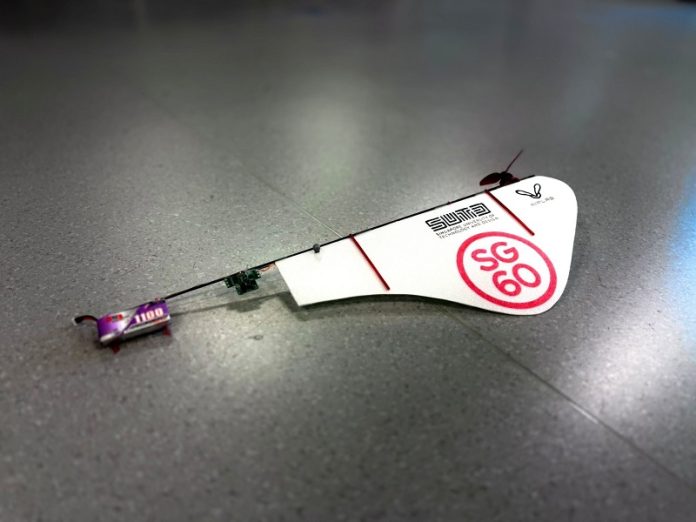
A team of researchers from the Singapore University of Technology and Design (SUTD) has created a tiny, one-winged flying robot that can stay in the air for 26 minutes—much longer than most drones its size.
The idea, inspired by the spinning seeds of maple trees, could transform how small drones are designed.
Back in 2015, when Singapore marked its 50th birthday, Associate Professor Foong Shaohui and his students set themselves a challenge: to build a drone that could fly for 50 minutes.
At that time, hobby drones could only manage about half that time.
Their project succeeded, but the result was a large, heavy, and complex quadcopter with multiple rotors.
Ten years later, instead of trying to make a big drone even better, Prof Foong took a completely different approach. He looked to nature for inspiration and focused on going smaller and simpler.
The result was a lightweight “monocopter” with just one rotor—more like a spinning seed than a traditional drone.
Maple seeds, also called samaras, spin gently to the ground in a stable, efficient way. Every part of the seed helps it stay in the air longer.
Using the same principle, the SUTD team built a 32-gram flying robot with a single wing that spins to generate lift.
It has no flapping parts, gearboxes, or complicated moving mechanisms—just one motor that spins the entire body.
Small drones are usually less efficient than larger ones because tiny propellers need a lot of power but can’t produce much thrust. By copying the maple seed’s design and using computer optimization to perfect the wing shape, angle, and weight balance, the researchers achieved record-breaking performance.
The monocopter can hover while using very little energy—about 9.1 grams of lift per watt of power—beating other small hovering drones.
Research Fellow Cai Xinyu called it “a first-of-its-kind achievement,” saying it proves that tiny flying robots can match or even outperform much bigger systems in endurance.
The potential uses for the monocopter are exciting. One early idea is to use it as a lightweight, reusable radiosonde—an instrument carried by weather balloons to collect data.
In fact, this application won the Sustainability Award at the 2024 James Dyson Awards. Because the monocopter is small, efficient, and cheap to make, it could also be used in other long-duration missions where size and weight are critical.
For now, the prototype uses off-the-shelf parts, but the team plans to design custom components to push its performance even further.
They hope to increase its payload capacity and flight time without making it much heavier, possibly by using advanced materials and experimenting with new wing shapes inspired by nature.
Prof Foong sees the project as a continuation of their work from the SG50 challenge, but with a new twist. The goal now is to create a monocopter that can fly for over 60 minutes by 2025, to celebrate Singapore’s 60th birthday.
“Normally, bigger drones are more efficient. We’ve managed to reverse that, making a smaller system that performs better,” he said.
“It’s about understanding the physics, designing smartly, and combining human creativity with AI to find the best solutions. With more development, the possibilities are endless.”
Source: KSR.



